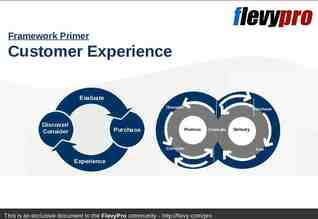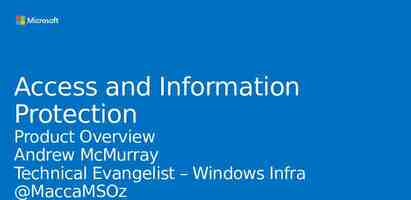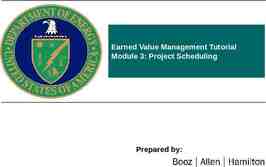Social Security Disability Benefits and Transition Age Youth January
33 Slides210.01 KB

Social Security Disability Benefits and Transition Age Youth January 2022 Work Incentives Planning and Assistance National Training and Data Center This presentation produced at U.S. taxpayer expense.

Where are we going today? 1. Basic explanation of the various types of Social Security benefits paid to transition age youth with disabilities. 2. Basic overview of how employment affects Social Security disability benefits. 3. Brief discussion of special Social Security disability benefit issues affecting transition age youth. 2

First Step – Know Which Benefits Your Students Get! Social Security disability benefits are paid through two basic programs: – SSI – Supplemental Security Income. – Title II Disability Benefits – often referred to simply as “disability” or SSDI. These two programs are completely different and treat earned income very differently . Some students get BOTH types of benefits. Some students get NEITHER benefit. 3

Comparison of SSI and Title II Disability Benefits SSI Means-tested income support program funded by federal tax dollars, not Social Security trust fund. Limits on earned income, unearned income and resources. Comes with Medicaid in most states. Title II Disability Entitlement program based upon insured status funded by Social Security trust fund. Three different types of eligibility – SSDI, CDB and DWB. Not means-tested. Comes with Medicare after waiting period. 4

Eligibility for SSI Federal monthly payment capped at the current Federal Benefit Rate (FBR). In 2022 the FBR is 841 for an individual and 1,261 for an eligible couple. Countable resources under 2,000 for an individual or 3,000 for an eligible couple. Have unearned income of less than the current FBR. Parental income counts for children under 18 and spousal income counts for married persons. This process is known as “deeming”. 5

Amount of SSI Payment Affected by Many Things Earned Income – wages, net earnings from selfemployment, in-kind items in lieu of pay. Unearned income. In-kind support & maintenance (ISM). Full ISM results in a 1/3 reduction of SSI base rate ( 560.67 in 2022) Overpayment recovery. 6

Eligibility for Social Security Disability Benefits (Title II) Not be working or earnings are under SGA limit ( 1,350/ 2,260 GROSS per month for 2022). Have earned sufficient “credits” by paying into the system yourself, have a deceased, retired or disabled parent who paid in on your behalf (CDB), or be eligible for Disabled Widow(er)s Benefits (DWB). Resources and most other forms of unearned income not considered. 7

Childhood Disability Benefits (CDB) To be eligible for Social Security as an adult child with a disability, individuals must be: 1.18 years of age or older; 2.Disabled by Social Security’s definition before age 22; and 3.Child of an insured worker who is either disabled, retired or deceased. If child marries, benefits end unless marriage is to another Title II beneficiary (excluding those on child’s benefits). 8

Not all Social Security Benefits Received by Students are Related to Disability A common benefit received by students is known as “child’s benefits” or sometimes “dependent’s benefits”. These benefits are NOT based on the student’s disability. Child’s benefits are paid to dependent children of insured workers who are now disabled, retired or deceased. Child’s benefits are paid up to age 18 or 19 years 2 months if still in High School. 9

Concurrent Beneficiaries Eligibility for Title II benefits is established, but the amount of monthly benefit check is below the current SSI FBR ( 841/ 1,261 in 2022). Eligibility for SSI is established (i.e.: the individual does not exceed the unearned income & resource limits and meets other requirements). The SSI check is reduced because unearned income is received (the Title II check). 10

Social Security Benefits and Work Paid employment and Social Security disability benefits don’t have to be mutually exclusive. It’s possible to work (even full-time) and keep Medicaid and/or Medicare in almost every case. It’s possible to work and come out ahead financially even if benefits are reduced or ceased. It’s possible to get benefits back again if lost due to employment. 11

Employment and SSI 1. Start with the GROSS monthly earnings and subtract a 20.00 general exclusion. 2. Next, subtract a 65.00 earned income exclusion. 3. Take the remaining amount and divide it by two. You are left with what is called countable earned income. 4. Subtract the countable earned income from the base SSI rate for the person. The remaining amount is the adjusted SSI check. 12

A simple way to explain this Up to the first 85.00 that you earn each month does not count against you. For anything above 85.00, Social Security will take away one dollar from your SSI check for every two dollars that you earn. SSI recipients almost ALWAYS come out ahead by working! 13

Example of SSI & Work: IT PAYS TO WORK! Mary is getting 841 in SSI. She goes to work earning 623/month gross. Mary’s SSI check will be reduced by about 269 because Social Security counts less than half of her earned income. ( 623 - 20 - 65 2 269 – 841- 269 countable 572 adjusted SSI check Paycheck 623 adjusted SSI Check 572 1,195 14

Student Earned Income Exclusion This work incentive allows an SSI recipient who is under age 22 and regularly attending school to exclude up to 2,040 of earned income per month up to a maximum ANNUAL exclusion of 8,230 in 2022. Social Security will exclude income of up to 2,040 per month until the full exclusion of 8,230 is exhausted or the individual is no longer a student. SEIE figures are adjusted annually and only apply for the current calendar year. 15

Definition of Regularly Attending School In a college or university for at least 8 hours per week; or In grades 7 through 12 for at least 12 hours per week; or In a training course to prepare for employment for at least 12 hours per week (15 hours a week if the course involves shop practice); or For less time than indicated above for reasons beyond the student's control (such as illness). Home schooling may also count. 16

Impairment Related Work Expenses (IRWE) The purpose of the IRWE work incentive is to enable recipients of SSI benefits to recover some of the costs of expenses incurred as a result of their disability to support their work. Deducting the cost of impairment-related items and services from monthly gross wages increases SSI cash payments. The cost of IRWE expenses can also be deducted from gross earnings during initial SSI application processes enabling individuals to meet become entitled. 17

IRWE Criteria Expenses must be directly related to enabling the individuals to work; Individuals, because of a severe physical or mental impairment, must need the items or services to work; Costs must be paid by the individuals and not be reimbursable from other sources; Expenses must be paid in a month in which the individuals are or were working (some exceptions); Expenses must be reasonable. 18

Blind Work Expenses Any earned income which a blind person uses to meet expenses needed to earn that income is not counted in determining SSI eligibility nor in determining the payment amount. Expenses DO NOT need to be related to the person's blindness. 19

1619(b) Extended Medicaid Even after earnings cause the loss of SSI cash payments, Medicaid can be continued indefinitely – Must still be disabled; – Must meet the Medicaid “need” or “use” test; – Must have annual earnings under the current threshold amount; – Must meet ALL other SSI requirements including limits on unearned income and resources. 20

Plans to Achieve Self Support (PASS) A Plan to Achieve Self Support (PASS) allows a person with a disability to set aside income (earned or unearned) and/or resources for a specified period of time in order to attain a stated work goal. The purpose of a PASS is to help persons with disabilities establish or maintain SSI eligibility. It can also increase the person's SSI payment amount (up to the FBR). A PASS does NOT affect SGA determinations for Title II disability beneficiaries. 21

PASS Requirements Submitted on form SSA-545. Identifies reasonable & feasible occupational goal. Definable timeframe with steps. Identifies sources and amounts of income to be set aside. Details all planned expenditures & justifies major purchases. Initial PASS will be for no more than 18 months. Leads to SGA level employment, or significantly reduces SSI. 22

Employment and Title II Disability Benefits (SSDI, CDB) Value of work is compared to an annual guideline -Substantial Gainful Activity (SGA) to determine continued eligibility. As long as countable earnings remain under the current SGA guideline, cash benefits may continue. Special work incentives may apply to reduce countable income. SGA for 2022 - 1,350 gross per month for non-blind, 2,260 for blind. No gradual reduction of payments in this program. 23

Employment and Title II Disability Benefits Work incentives consist of a series of “phases” – each successive phase provides a level of protection from loss of benefits or provides ways to get benefits back if needed. The work incentive phases include: – – – – Trial Work Period (TWP), Extended Period of Eligibility (EPE) Grace Period Extended Period of Medicare Coverage (EPMC) 24

The Good News Beneficiaries who have not used any of their work incentives phases may keep their full payment for a minimum of 12 months after going to work – no matter how much they earn! Title II work incentives and phases are complex – get help from your WIPA project. 25

Special Issues for Transition Age Youth SSI recipients must undergo the age 18 redetermination for benefits to continue under the adult standard. Parent-to-child deeming in the SSI program stops at the 18th birthday. Eligibility for Social Security child’s benefits stops at 18 (or 19 yrs 2 months if still in high school). Eligibility for CDB may begin at the age of 18 if the disability standard is met. Youth who work may establish eligibility for SSDI quickly. 26

Age 18 Redetermination for SSI Adult definition of disability different than child’s definition for SSI – more stringent. For SSI to continue after age 18, individuals must meet the adult definition of disability. Approximately 51.6% of SSI recipients are initially found ineligible to continue SSI benefits after age 18. 27

More about Age 18 Redetermination The re-determination may be conducted at anytime after 18th birthday. Usually it is done before the person turns 19. If found ineligible, payments are due for two months beyond the month in which the disability determination was made. The determination is NOT retro-active to the 18th birthday. 28

Deeming When Social Security determines the eligibility and amount of payment for an SSI recipient, the income and resources of people responsible for the recipient's welfare are also considered. This concept is called "deeming." It is based on the idea that those who have a responsibility for one another share their income and resources. It does not matter if money is actually provided to an eligible individual for deeming to apply. 29

What you need to know about PtC Deeming Only Social Security can determine the amount of deemed income or resources. Not all income counts - there are many exclusions and deductions! Deemed income from a parent to a child is treated like unearned income in SSI calculations. Parent-to-child deeming only applies to individuals under age 18. 30

Establishing Entitlement for CDB SSI is payer of last resort - Social Security requires application for CDB or SSDI if there is potential eligibility. CDB payments in excess of the current FBR 20 ( 841 for 2022) generally cause loss of SSI eligibility. Medicaid may be retained under special Medicaid rules for former SSI recipients who lose SSI due to CDB entitlement - but you may need help with this! Medicare will start 24 months after eligibility for CDB payments. 31

What to remember from all of this Yes, work IS possible and beneficial! Turning 18 creates lots of changes in Social Security disability benefits status. Get benefits counseling BEFORE students begin working or start seriously preparing for careers. Prepare during the 17th year to minimize negative impact of changes that occur at 18. Keep earnings documentation and any correspondence to/from Social Security. 32

How can I get help? NOTE: WIPA programs should customize this slide to include local contact information. If your program requires beneficiaries to be referred through the Ticket to Work Help Line, indicate that here. Get started by contacting your local WIPA program In [state, city] call XXX-XXX-XXXX. We will determine eligibility for services and provide information about which WIPA services would best meet your needs. 33






